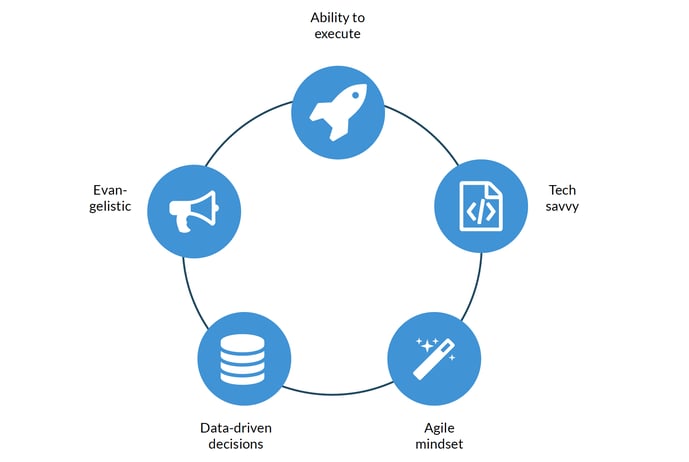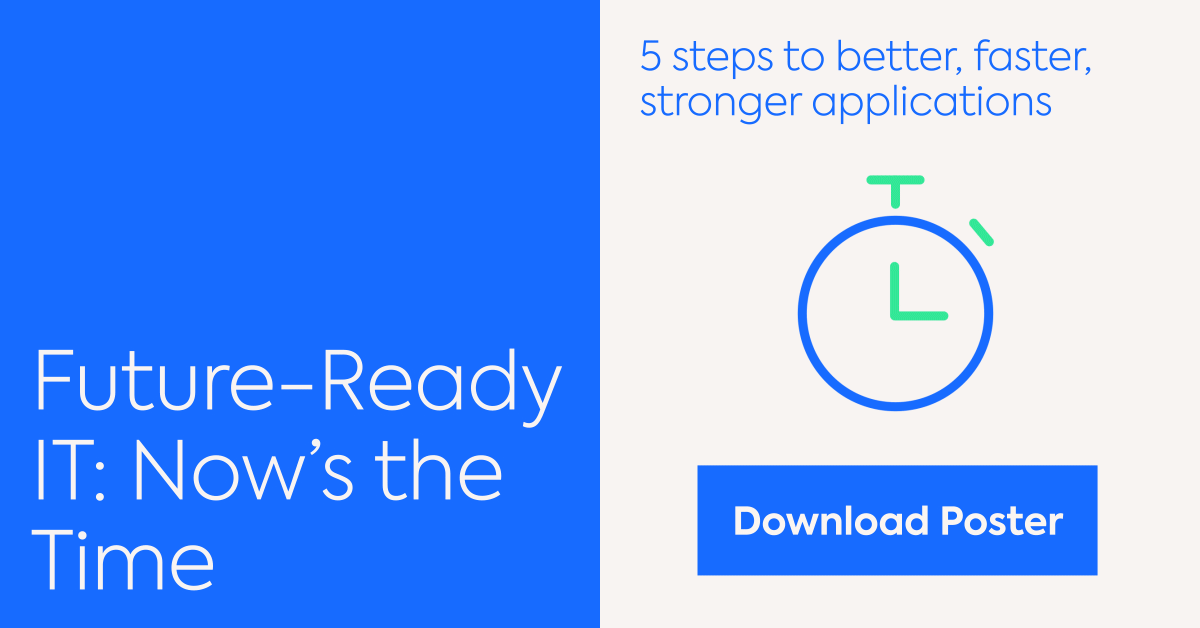
The term digital transformation is heard everywhere these days — and when its mentioned in business context, it can seem as if digital transformation is here to overthrow entire industries. At LeanIX, we view digital transformation as an important tool to redefine your business and catapult your organization swiftly into the digital age.
What exactly is digital transformation, and what has been its effect on Enterprise Architecture?
What is digital transformation?
Digital transformation is defined as the profound transformation of business and organizational activities, processes, competencies, and models to fully leverage the changes and opportunities of a mix of digital technologies and their accelerating impact across society in a strategic and prioritized way, with present and future shifts in mind.
This current digital change can be compared to the invention of the printing press or of the Internet. Business models are being questioned, and technology is gaining importance for companies of all size. In these times, companies need to find new models of collaboration to be successful.
Digital transformation imposes areas of advancement in the form of challenges for organizations of every size. These new developments push companies to be more agile, customer-centric, innovative, efficient, and team-oriented. Big Data and the Internet of Things (IoT) also drive organizations to seek more service-oriented streams of revenue. These efforts come as a swift change. This article will focus on digital transformation’s impact on Enterprise Architecture.
Digital transformation is not a new idea but has been made possible with the development of particular technologies: Social, Mobile, Analytics & Cloud. When successfully implemented, digital transformation can change many things about a company including company culture, deployment frequencies, and quick iterations.
Modernizing, rapidly iterating, and scaling “custom applications” holds the key to digital transformation success. Unfortunately, most current applications and company architecture imposes significant challenges to rapid iteration and efficient scaling.
Challenges for developers:
Some of the challenges faced by developers to develop new features on existing services, rapidly prototype and introduce new services due to this tight coupling are –
- Monolithic architecture - monolithic applications are built and deployed as a single application, and small changes can easily suspend the use of entire systems until bugs are fixed. Many teams prefer the flexibility and autonomy to freely deploy and release new features and enhancements. This freedom and flexibility come from implementing the microservices architecture.
- Shared tooling and development methodology – when custom apps are forced to use the same languages to operate, it may become difficult to implement lone-standing features in different languages. Under digital transformation, developers and architects prefer the freedom of using various programming languages for various segments of applications.
- Scaling – current architecture forces operations teams to run multiple instances of the monolithic app tier for scaling. Operations and DevOps teams would like to dynamically scale the right portions of the application independently based on demand.
These challenges have driven the push to microservices architecture.
What are microservices?
Microservices is a specialization of an implementation approach for service-oriented architectures (SOA) used to build flexible, independently deployable software systems. Services in a microservice architecture (MSA) are processes that communicate with each other over a network in order to fulfill a goal. These services use technology-agnostic protocols. The microservices approach is the first realization of SOA that followed the introduction of DevOps and is becoming more popular for building continuously deployed systems.
In short, applications designed using this architecture are comprised of small, modular, independent services. There are many benefits of having single-functioning separate services with their own supporting codebase. These services are loosely coupled, communicate through APIs and are easier to develop, update, and maintain.
[Click here to learn more about microservices architecture.]
The two available options to deploy microservices are as Platform as a Service (PaaS) or as Container as a Service (CaaS). Transforming existing applications into microservices involves decoupling tightly coupled applications and hosting them on PaaS or Caas. Such a change will require Enterprise Architects to change their working style.
In order to implement microservices, there are many changes that Enterprise Architects must be prepared for.
The EA Challenge: Overcoming the Ivory Tower.
Enterprise Architecture Management failing to play a critical role is alarming to both company leaders and EA practitioners. On the one hand, the demand for transparency and business-IT alignment is ever-growing. Without knowing its data, its applications, or its business capabilities, how should any organization meet the introduced challenges of continuous transformation, which are critical for survival? On the other hand, how can EA practitioners overcome the reputation of being ivory tower theoreticians that have no impact at all on the business?

Fig. 1: Five traits of tomorrow’s Enterprise Architect
From Keeper of the Grail to Vanguard EA.
Successful practitioners of Enterprise Architecture understand that a change of mindset is called for in order to succeed in digital transformation. Gartner coined the notion of a Vanguard EA to distinguish an EA of Tomorrow from the classic Enterprise Architect. The EA of Tomorrow's attention must shift from IT-specific legacy tasks towards facilitating imperative collaboration. Only then, can the current EA help companies to establish the common direction they need, and to build a modern IT for the digital age. The ideal nature of the modern Vanguard EA varies from company to company. However, successful companies make sure that the EA is not hidden in the IT department but has a comfortable place close to the CEO’s office. This juxtaposition of roles can imply to change the setting of an existing, IT-focused EA team and move it closer to the business.
Want to learn more about becoming a Tech-savvy EA of Tomorrow? Find out if you're the EA of tomorrow from this quick quiz:
Read more about Digital Transformation with Enterprise Architecture in our guide!







